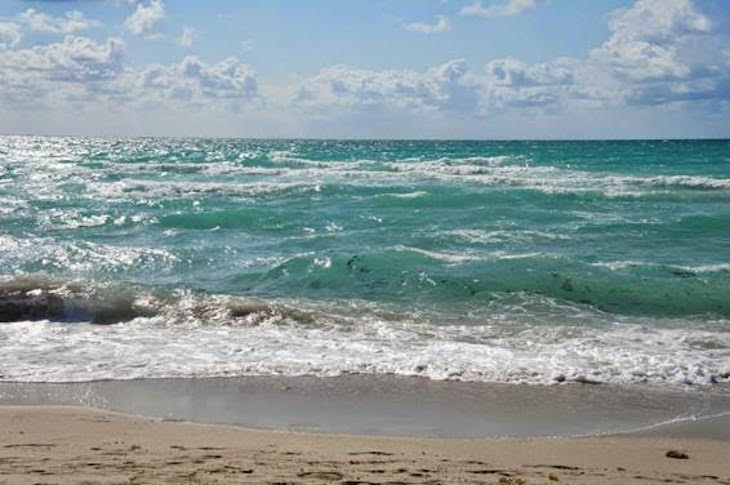People often wonder what is Thermohaline circulation?, since it is not a very commonly used term. When water is cold it is much denser than when it is warm or hot. Having a greater amount of dissolved salt also increases its density. On the contrary, the density decreases as the salinity of the water decreases. These principles are those that govern thermohaline circulation.
The most superficial ocean currents have the wind as their greatest driver, although it is not the only factor of movement. On the other hand, the deepest ones depend on a rigorous balance of densities. To the thermohaline circulation It is also known as the “conveyor belt” of the sea. Since one of the main currents of aguas connecting the Atlantic, Pacific and Indian oceans.
Influence factors of thermohaline circulation
At higher latitudes there are a large number of mechanisms that tend to increase the density of ocean waters. Among them, the icy winds that blow from the poles stand out, which cool the surface waters and eliminate the remains of heat that the sun’s rays may provide.


The coldest waters have a greater density. And therefore they tend to sink. Added to this is that in certain circumstances the decrease in temperatures helps sea ice form. Which are another of the elements that densify the waters that are closest to the poles and the coldest coasts.
These changes in temperature and density end up forming more ice and during this transformation, the salt that was dissolved is eliminated through a process called “brine exclusion.” The result is that the ice is made up of fresh water, almost entirely. And the removed salt thickens the density of the surrounding water.
How do currents move through the thermohaline circulation?
Due to a simple difference in weight, the densest waters, whether due to excess salinity or low temperatures, are those that submerge. After passing through the most superficial layers, they finally reach the abyssal plains and the most remote and deep parts of the oceans, from where they begin to move.
The North Atlantic, Arctic Oceans and the entire southern oceanic zone are the generators of colder and saltier waters. Because the ocean floor in the Bering Strait area is shallow, deeper and denser currents are prevented from moving from the Arctic Ocean to the Pacific Ocean.
The denser waters of the northern Atlantic Ocean floor move southward. And they join those that come from the depths of the Southern Ocean. Once again the situation of shallow depth occurs in the conjunction area. Which prevents the flow of both from ending up in the Pacific Ocean.
In this case, it is the Drake Passage, a strait between the Antarctic Peninsula and the southernmost area of South America, which prevents the cold current of the Atlantic Ocean linked to the icy southern waters from going westward. Therefore, at this point, the thermohaline circulation turns and heads east.
Diversification
From there, several divisions occur since there are currents that flow towards the north. And they circumnavigate the eastern coasts of the African continent heading to the Indian Ocean. At the same time, the rest continues heading east and upon reaching the Pacific Ocean basin it just turns north.
This is the crucial point, in which the two branches that make up thermohaline circulation Finally they begin to mix with lighter waters, with higher temperatures and a higher degree of salinity. And they reverse the process that gave rise to them. As they lose density, they end up resurfacing from the depths and return to the surface.
Thermohaline Circulation: a long and winding path
Scientists estimate that for these enormous masses of water to complete the entire journey, which takes them from the north of the Atlantic Ocean where they arise, to the places where they converge with the warm waters of the Pacific Ocean, approximately 1,600 years may pass. .
In order to achieve an adequate balance in the flow of deeper waters towards the coasts of India and the Pacific Ocean, surface waters flow towards the southwest, so that they cross the Indonesian archipelago and reach the Indian Ocean, where they join other warm currents.
A combined flow is formed that will border Africa and when it reaches its southern end it will enter the Atlantic Ocean. From there, this surface current heads north and receives a warm push from the Gulf Stream. To make its way once again to the northern tip of the Atlantic and begin the cycle again.
Thanks to the global pattern of thermohaline circulation, the waters of the oceans mix, constituting a unique, diverse, vast and interconnected system. In addition, it plays an essential role in providing heat to the polar areas. Which influences the amount of ice that forms and in turn the albedo and the formation of the world’s climate systems and the maintenance of life.

